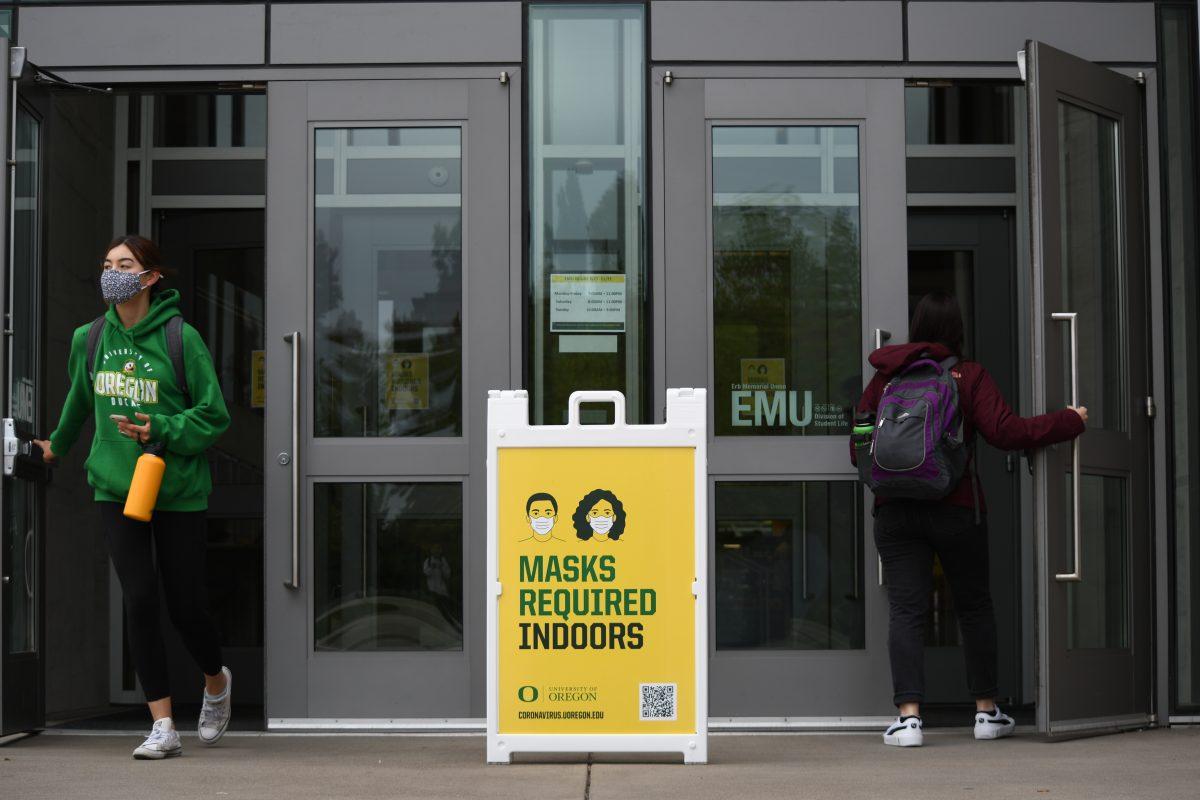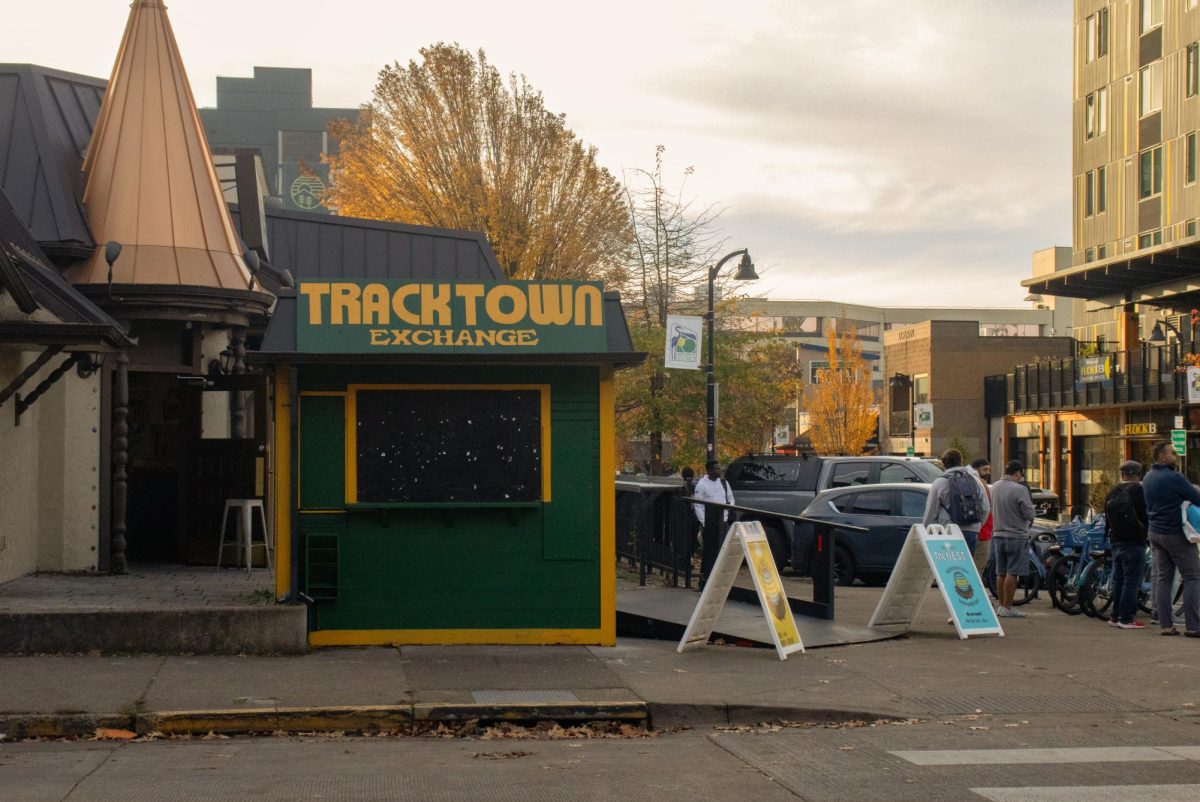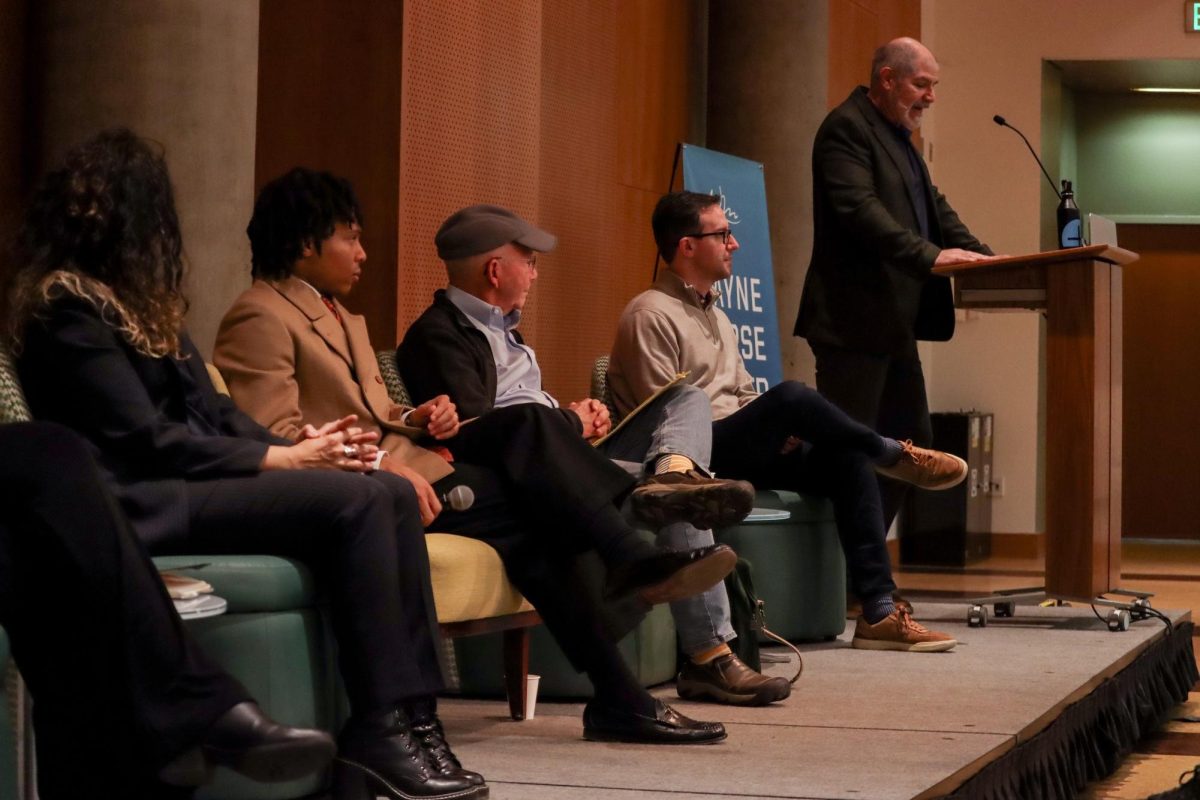Title: Back to COVID-Campus
Written by Sienna Riley, photographed by Andrea Secchi
Welcome back, Ducks! For many of us, this fall term will be our first one back on campus since the University of Oregon moved to online courses at the beginning of spring 2020. And for many more of us, this will be our first time taking classes on campus altogether.
While it’s exciting to be here and enjoy all that an in-person fall term in Eugene has to offer, there still remains that lingering uncertainty surrounding the ongoing COVID-19 pandemic and what that means for campus life. As much as we’d like to be, we’re nowhere near back to normal.
“We’ve spent the last 20 months looking at each other as vectors of risk, rather than as part of a community that we want to embrace,” said UO President Michael Schill in a report to the university’s Board of Trustees prior to the start of fall term. “So it’s going to take some time, I think, for all of us … to get over some of the anxiety that all of us feel.”
How can we navigate being back at school while keeping ourselves and those around us safe from infection?
What do the regulations say?
Let’s start with the state of Oregon’s guidelines. According to the guidance from the Oregon Health Authority, Gov. Kate Brown along with OHA leaders enacted a universal mask mandate for all indoor spaces. As of Aug. 27, Brown extended that mandate to most public outdoor spaces if physical distancing is impossible, regardless of your vaccination status. These guidelines were a reinstatement of the mask mandates she’d lifted one June 30, as the delta variant had begun to surge throughout the United States.
In the case of immunization, all Oregonians age 12 and older are eligible to receive a COVID-19 vaccine. Oregon is also following the Center for Disease Control and Prevention’s recommendation for a third booster of the Pfizer-BioNTech vaccine for people 65 and older and the immunocompromised. The CDC issued this recommendation Sept. 24.
What is UO doing?
Starting with mask mandates, UO’s guidelines are pretty consistent with the state, requiring masks in all indoor settings and most outdoor spaces where social distancing is impossible regardless of vaccination status.
Of course, some exceptions to this rule would be if you’re in a room alone, actively eating or drinking in most settings, in your own campus housing room, in a shared residence hall restroom or if you have accommodation for a medical condition or disability that makes it difficult to breathe while wearing a mask.
Students seeking such accommodations can request them through the Accessible Education Center, and faculty and staff can request through the Office of Human Resources.
Additionally, UO required proof of vaccination status prior to the start of fall term to work, live and attend in-person instruction on campus. However, you could request an exemption that would require you to undergo weekly COVID-19 testing. The deadline to report your proof of vaccination status or exemption was Sept. 27.
According to the UO’s COVID-19 safety dashboard, 96.3% of students and 95.3% of faculty and staff reported being fully vaccinated. The small percentage of individuals remaining were exemptions.
Making the most of COVID-Campus
Knowing some of the regulations in place on campus to help mitigate the spread of COVID-19 may reduce some of the anxieties we might have going into the term. That being said, the rest of the responsibility of having a safe transition back to campus falls to us.
-
Social distance when you can.
This is one of the most effective ways to slow the spread of COVID-19. Still limiting your close contact with people whenever possible is always the best way to avoid catching or spreading the virus. With that said, we can’t always stay six feet away from people, especially in a classroom setting. This is where the next tip comes in.
-
Mask up.
Making sure you wear a mask that fully covers your nose and mouth where and when it’s required is another important part in keeping those around you safe. “Masks are proven to significantly limit the spread of COVID-19, including the delta variant,” Andre LeDuc, UO’s chief resilience officer, said. “This requirement will remain in place until no longer necessary from a public health standpoint.”
-
Get regularly tested.
Those with vaccine exemptions will already be required to undergo weekly COVID-19 testing, but this tip can apply to vaccinated people, as well. In a weekly report regarding breakthrough cases — when a fully vaccinated individual tests positive for COVID-19 — the OHA attributed roughly a quarter of Oregonians that tested positive for the virus to breakthrough cases.
The OHA still contends that vaccination is “the most effective tool to reduce the spread of COVID-19,” with many breakthrough cases “believed to experience no symptoms or minimal symptoms.” Nevertheless, it’s better to get regularly tested out of an abundance of caution while we’re still in this transitional period in the pandemic.
-
Stay home if you’re feeling sick.
This is perhaps the most important tip of all. Make it a habit to do a regular symptom check every morning before starting your day. If you feel any symptoms that might be linked to COVID-19, your best course of action is to stay home so as not to potentially spread the virus to others.







